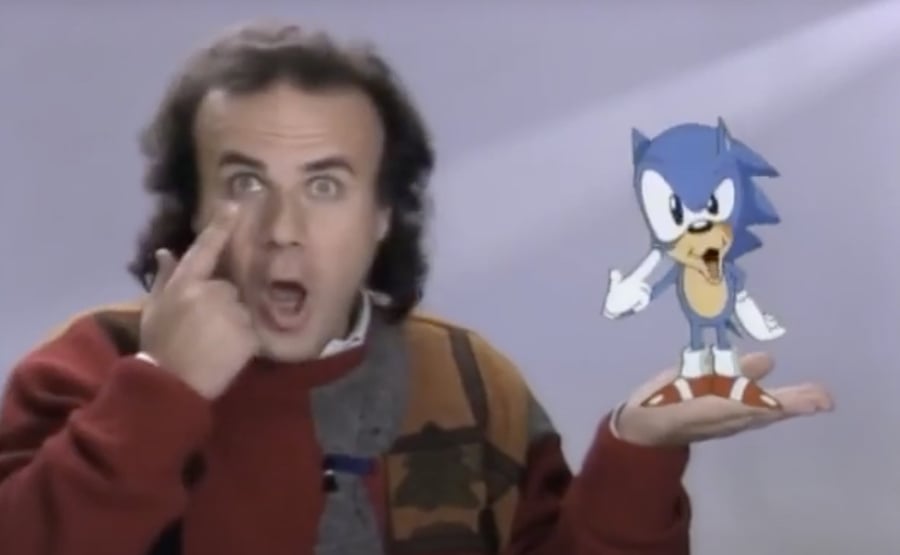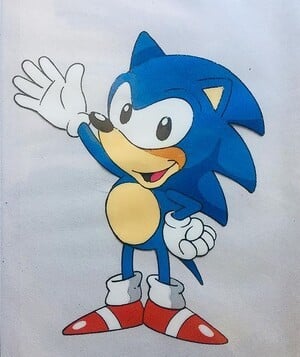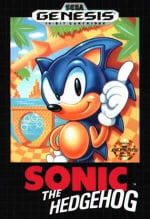
Sega used to be huge in Italy. After a rough start for the Master System, marketed by a small company which had little to no experience in the gaming market, Sega stepped up and decided to hand over its consoles to big toys retailer Giochi Preziosi. The company was created in the mid-'70s by Enrico Preziosi, after leaving his job at Philips. Ten years later, Giochi Preziosi was probably the biggest importer and retailer of toys in the country, the company had gone from being an office in a small garage to distributing the biggest toys in the '80s and '90s, like Nintendo's Game & Watch and Teenage Mutant Ninja Turtles. But, for Sega, it decided to go one step beyond.
The first order of business for Preziosi, in order to better promote his company's products, was creating its own marketing agency. Thus, he founded Winter Video, appointing Francesco Malaspina as the director. Malaspina remembers that Sega was a brand that Enrico Preziosi took very seriously from day one. "The marketing budget for Sega’s consoles was unlike any other we had seen before, especially in the marketing for toys which was never very big in Italy. He was really adamant that they had to dominate over Nintendo… and I think we succeeded!" Preziosi’s first successful idea was to feature soccer players in their Sega commercials, something that had never been attempted before to sell toys.

In 1991, the success of Sonic the Hedgehog led the company’s CEO to create something entirely new. That’s how Winter Video ended up producing the first animated version of Sonic – well, at least the first to be released outside of Japan. The animation was made by Riccardo Mazzoli, today a quite well-known comic book artist; at the time, he had just started out in the company. "I wasn’t really a fan of video games," he explains today. "But Preziosi decided he wanted a cartoon of Sonic so, as I had already worked in animation for Bruno Bozzetto’s studio, they told me to make one."
We asked Mazzoli what were the sources he used for animating the hedgehog and he mentioned how there really were none. "I used what we had, because there really wasn’t much else," he replies. "I looked at the box art, at the manual and played a bit of the game, so I could animate Sonic’s spin attack as best as I could." When asked if Preziosi received any kind of support materials from Sega, he replied: "not that I know of, they probably wanted to make the commercial as quickly as possible so they decided not to wait."
Indeed, Sonic’s animated commercial ended up being quite important in the overall marketing strategy, especially because Sonic was supposed to interact with a real-life actor: Jerry Calà.
Calà at the time was mostly known for raunchy comedies that one would not consider especially family-friendly, especially by today’s standards. Malaspina remembers that "everyone liked Jerry, he seemed to be a hit both with kids and families, so it was a natural choice for him to be the face of Sega." From 1991 to 1993, Calà would take the place of the soccer players as the face of Mega Drive and, later, the Game Gear. So, indeed, he was also the first real-life actor to 'interact' with the animated hedgehog, almost 30 years before James Marsden would have that same honour.
In the very first commercial, we see Sonic coming up from a background of Green Hill Zone, commenting how the Mega Drive is the best console on the market. Then he jumps on Calà’s hand and, together, they make the "ocio però" sign. Ocio però can be translated as "be careful" (or looky-looky if we want to keep the same humour), it was a sort of slogan that Calà and Preziosi had invented together. The slogan was meant to remind kids to always be careful when buying consoles and games, making sure they had the original Giochi Preziosi logo on them.
Not only would the animated Sonic pop up in other commercials, but these same animations would be recycled in the commercials for Sonic 2 as well. Unfortunately, Mazzoli wasn’t called to animate Tails, but he recalls the time fondly. "It ended up being my main thing during my time at Winter Video! I remember I used to participate at these delirious marketing meetings with Jerry Calà, Enrico Preziosi and Francesco Malaspina. They would just throw whatever ideas at the wall to see what worked. It was really a sort of working-on-the-spot marketing, since there was no time to test out what worked and what didn’t on a limited audience, before releasing the commercials. Whatever crazy ideas they thought of, we would try it and see if the commercials connected with the audience. Most times, they did!"
In 1993, the Sonic Sat-AM cartoons were also created by ABC, with Reteitalia co-producing, which was a company owned by Silvio Berlusconi who had quite close connections with Enrico Preziosi. Still, weirdly enough, the Sonic cartoons in Italy were barely broadcasted at all, and only for a limited period of time. It seems to definitely be no coincidence that the original animated cartoon of Sonic was co-produced by a company that had close ties with Winter Video. But, at this time, we can only speculate as to what really happened.
But what did Sega of Europe think of this different style of gaming marketing? Dario Berté, at the time marketing director for Giochi Preziosi and Sega, remembers that Sega of Europe quite liked what they were doing and always seemed on board to try new ideas for commercials. "Our main contact was Shigekazu Hayashi and we never had any problems with him. I think that as long as we were successfully selling the consoles," remembers Berté. "They seemed to be happy."
While there is no official sales data available, from interviews with several marketing directors who worked with both Sega and Nintendo, everyone seems to agree that, up to 1992, it was Giochi Preziosi ruling the console market in the country. With the arrival of the Super Nintendo, though, things would start to change. After 1993, with both the 32X and Mega CD being commercial failures in Italy, Giochi Preziosi seemed to lose faith in Sega.
After a series of not-very-successful attempts at selling the new add-ons, it seems that Giochi Preziosi started cutting the advertising budget for Sega. It also did not help that the star of the campaign, Jerry Calà, ended up being involved in quite a serious car accident at the end of 1993. While the actor was out taking several months to recover, it seems Sega was slowly slipping out of Giochi Preziosi’s top priorities.
Still, Riccardo Mazzoli would continue his relationship with Sega, going on to be the presenter of USA Today. This was a container program, originally showcasing short snippets of gameplay from Amiga and Commodore 64 games. From 1993, the program would be sponsored by Giochi Preziosi, which obviously meant the program's focus would shift exclusively to Sega titles. Mazzoli recalls that it would be the company that would choose the games to showcase on the program. USA Today would also end up on the chopping board after Preziosi cut the marketing budget, as the program was quickly cancelled in 1994.
While marketing director Dario Berté is not really keen on discussing what happened between 1994 and 1998, it is pretty clear that relationships between Sega and Giochi Preziosi deteriorated fast. Gone were the animated commercials and high-profile sportsmen pretending to play the Mega Drive. Despite Giochi Preziosi continuing to distribute Sega consoles well until 1998, some magazines (as early as 1995) reported talks of a crisis between the two companies. The Sega Dreamcast, released just when Giochi Preziosi started to pull out of video games, also got caught in the confusion. It is not a coincidence, then, that most of Dreamcast’s early commercials were not even broadcasted in Italy.
The animated Sonic commercial was definitely the most striking consequence of Sega consoles being marketed with huge amounts of money and crazy ideas. Mazzoli says that people still act very surprised when they discover he was behind this first attempt at animating Sonic. "Everyone still remembers the commercial very fondly! It was a pleasure for me to do them, despite not having worked with games any more after 1994. But I still do keep all the Sega games I played but, I confess, these days my kids have more fun with Sonic than I do. But, who knows, one day I might get back to animating Sonic…"


